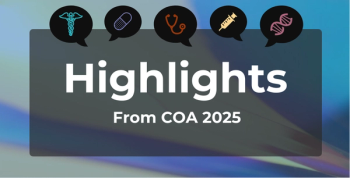
CD4/CD8 Ratio a Useful Predictor of Mortality in Patients Living With HIV
A review found that CD4/CD8 ratio could be used as a prognostic marker for mortality in patients with HIV, though future studies need to be done to confirm these findings.
Clinical practices can include the CD4/CD8 ratio as a prognostic marker for mortality in patients living with
Life expectancy in PLHIV has increased since the introduction of antiretroviral treatment (ART) but comorbidities and other diseases not related to AIDs have also increased due to this survival. CD4/CD8 ratio has been used as a marker of immune dysfunction in PLHIV, because a low ratio results in heightened inflammation and immunosenescence, and the ratio is known to correlate with a range of comorbidities for PLHIV on ART. However, its use in predicting mortality is unclear compared with using CD4+ and CD8+ count alone. This review aimed to evaluate the role of CD4/CD8 ratio in predicting mortality due to reasons unrelated to AIDS in PLHIV receiving ART.
Studies from January 1996 through January 2023 were included in this study. The researchers used Medline, Embase, Cochrane Central Register of Controlled Trials, and Web of Science databases to collect studies for the review. Studies were included if all participants were PLHIV and aged 18 years and older who were starting or were currently taking ART with an undetectable viral load. All-cause mortality and non-AIDS mortality were deemed the primary outcomes.
All studies were split into 2 categories of CD4/CD8 ratio measurement as either categorical or as a continuous variable. Risk of bias was assessed in all studies.
There were 20 studies included in the review, of which 7 were at high risk of bias. A total of 18 of the studies were multicenter, prospective cohorts from hospitals. There were 184,402 participants and 6940 deaths included in the 20 studies. All studies reported CD4/CD8 ratio. A total of 15 studies reported either non-AIDS mortality or all-cause mortality. Of those, 7 found that there was an association between increased mortality risk and lower CD4/CD8 ratio. The meta-analyses found that patients with a CD4/CD8 ratio below 0.5 had an increased risk of mortality (OR, 3.64; 95% CI, 3.04-4.35) when compared with those who had a ratio greater than 0.5.
The systematic review found that a higher risk of overall mortality was associated with lower baseline CD8+ levels. Patients who were virally suppressed with higher CD8+ counts had an increased risk of mortality or clinical events. A meta-analysis that included five studies found that patients with lower CD4/CD8 ratio categories had an increased risk of AIDS, non-AIDS clinical events, or mortality compared with those with higher ratios (OR, 2.49; 95% CI, 1.39-4.45).
There were some limitations to this study. Heterogeneity between the studies was notable in the measurement of CD4/CD8 measurement and CD8+, including in the main cut-off points. The times between ART initiation and outcomes was not always defined when it came to measuring the ratio. The laboratory threshold for viral suppression had variation due in part to the evolution of ART regiments over time. Most of the studies had a high or moderate risk of bias.
CD4/CD8 ratio can be used as a prognostic indicator of mortality and for events not related to AIDS in PLHIV who receive ART. Future studies should focus specifically on non-AIDS events and mortality with a design that is more uniform.
Reference
Ron R, Martínez-Sanz J, Herrera S, et al. CD4/CD8 ratio and CD8+ T-cell count as prognostic markers for non-AIDS mortality in people living with HIV. A systematic review and meta-analysis. Front Immunol. Published online February 1, 2024. doi:10.3389/fimmu.2024.1343124
Newsletter
Stay ahead of policy, cost, and value—subscribe to AJMC for expert insights at the intersection of clinical care and health economics.








